Clematis "Westerplatte": description, tips for growing and breeding
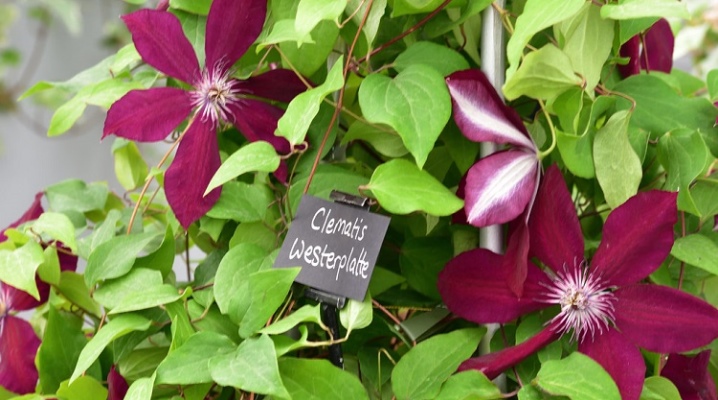
Clematis (aka clematis, vine) is a perennial deciduous plant of the buttercup family. There are many varieties and varieties of clematis: shrubs, shrubs, climbing vines, herbaceous plants. Clematis variety "Westerplatte" is one of them.
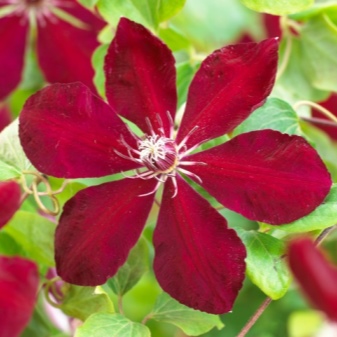
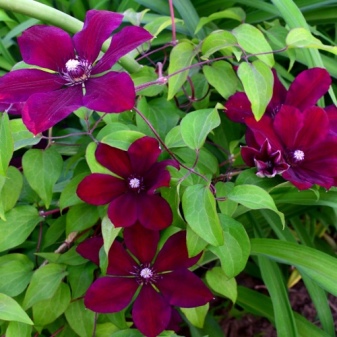
Peculiarities
By the type of growth, this variety belongs to large-flowered shrub vines. Bred in 1994 in Poland. Differs in high decorativeness and abundant long flowering during the whole warm season in two "waves" with a short break. On the first "wave" clematis "Westerplatte" blooms from the end of May and all June on the successfully overwintered shoots of the last season. The second period begins in mid - late July on the shoots of the current season and lasts until the onset of autumn cold weather. The flowers of the second "wave" are formed along the entire stem of the young liana, the plants retain their high decorative effect until the end of the season.
According to the description, the flowers are very large (up to 16 cm in diameter), rich red-burgundy garnet color, do not fade under the rays of sunlight, very effective. The petals are velvety, silky soft to the touch. Stamens are light (white or cream), anthers are dark red. Shoots grow up to three meters in length, the stems are plastic. In places favorable for clematis, "Westerplatte" can grow for more than a dozen years.
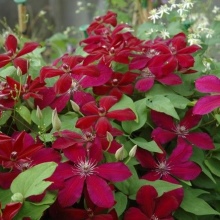

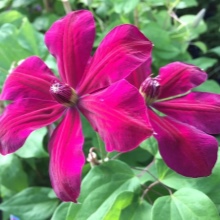
Breeding methods
Gardeners most often buy planting material for their site in garden centers. But if the site already has clematis suitable for age, then you can propagate them yourself. Reproduction is carried out mainly vegetatively.
Cuttings
From a plant at least 5 years old before flowering, cuttings are cut from the middle section of the vines and placed in planting containers with peat-sandy soil mixture for rooting.
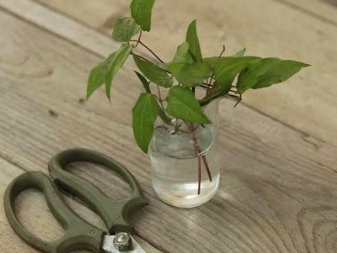
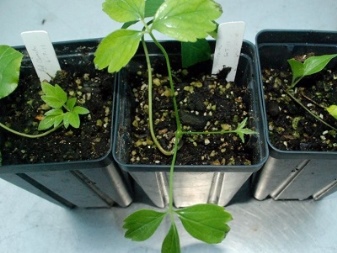
Layers
Next to an adult plant, a groove is made in the soil, the nearest shoot is bent into it and sprinkled with earth. When the roots appear, the new shoot can be transplanted into a separate container without cutting it off from the mother vine. Here clematis will grow until the end of the summer season.
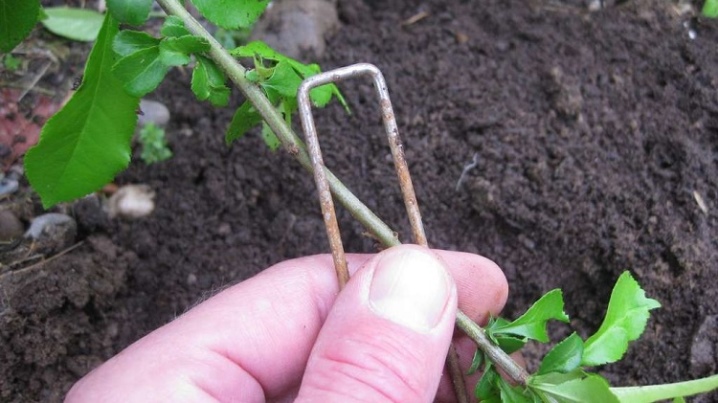
Dividing the bush
This method is used much less often, since it is a more time-consuming process than cuttings and layering. You will have to completely dig out the bush, divide it and plant the resulting parts in a prepared place. You can take only young bushes (up to 7 years old), since the root system of overgrown plants is difficult to divide into parts without serious damage.
Seed propagation is also possible, but it is used mainly in breeding work, and among gardeners it is practically not used.
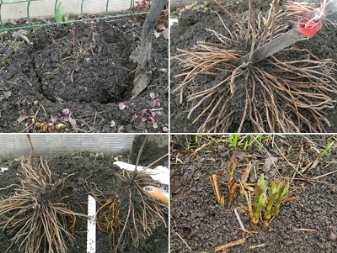

Landing
This procedure should performed in accordance with the recommendations of specialists:
- the planting pit should be prepared with a diameter of about 60 cm and 60 cm deep;
- a drainage layer of fine gravel, expanded clay, pebbles is placed on the bottom, but if the soil is light and permeable, you can do without drainage;
- humus is laid on the drainage (about 1 bucket);
- fertilizer is covered with a small layer of fertile garden soil mixed with peat chips;
- a small mound is formed from the soil in the pit, a seedling is placed on it, the roots are carefully straightened, soil mixture is poured, the root collar is buried;
- fill the pit with a soil mixture from garden soil and peat with the addition of 1 glass of wood ash and 1 handful of complex mineral fertilizer;
- compact the soil and water well;
- about 10 cm should remain in the planting pit to the ground level.
During the entire warm season, fertile soil is gradually added to the space left in the pit until it is completely filled. This measure promotes the active formation of powerful roots and new shoots to obtain a dense crown. It is necessary to immediately install the supports so that later you do not harm the roots.
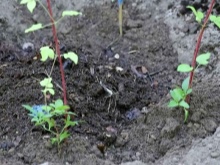
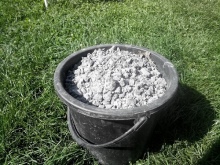
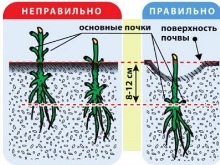
Growing and care
It is not difficult to grow Westerplatte clematis, no special manipulations are required, a standard set of activities is enough.
Watering
Watering clematis requires a lot of water. For one young plant, up to 20 liters are spent, for an adult - up to 40 liters of water. Watering is carried out in 5-10 days, the frequency of watering depends on the weather. It is better to pour water not at the very root, but at a distance of 30-40 cm from the center in a circle.
If it is possible to mount an underground drip irrigation system on the site, then this is the best option for clematis.
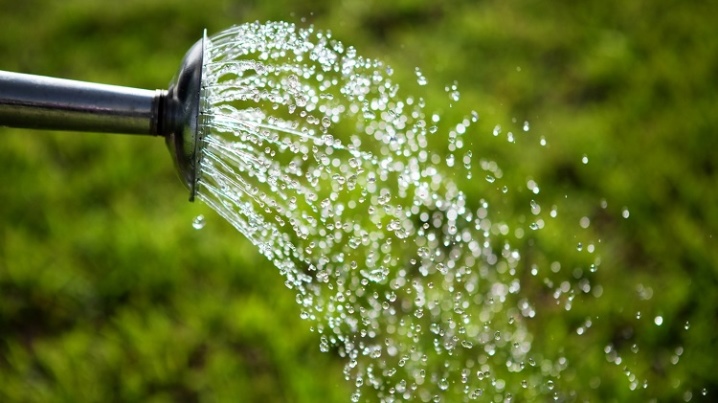
Top dressing
Lianas are fed with special formulations of liquid fertilizers for flowering plants. How much to add depends on the specific situation: the quality of the soil and the condition of the plant are taken into account.

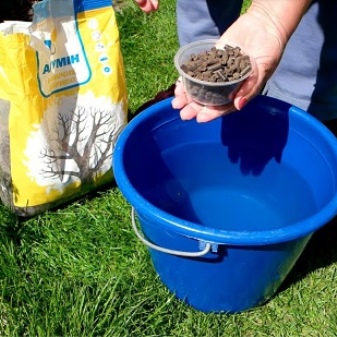
Mulching and loosening
At the beginning of the season, you can remove old mulch, overgrown weeds and slightly loosen the soil under the clematis. In the future, the soil is no longer loosened so as not to damage the roots and growing shoots. Mulching with small chips, sawdust, peat chips is used. Natural materials allow air to flow to the roots, retain moisture and protect against weeds.
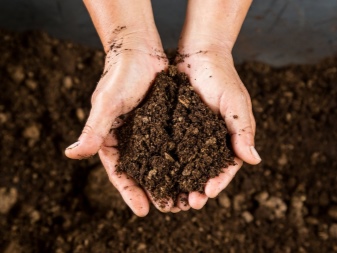
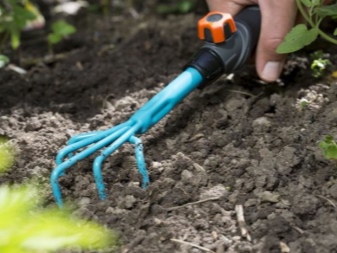
Pruning
Of the three groups of pruning clematis "Westerplatte" belongs to the second. Pruning by the type of this group provides for 2 times the procedure for one season:
- in the first pruning in mid-summer, last year's vines are completely removed when their flowering ends;
- the second pruning is carried out at the end of the warm season, shortly before the shelter for the winter, the shoots of the current year are shortened, 5-8 shoots 30-50 cm in size are left under the shelter in the winter, which in the next spring will bloom in the first "wave".
Such pruning allows you to contemplate on the site the lush blooming vines throughout the warm season. In the fall, you can cut the liana completely (according to the third pruning group), but then the first "wave" of flowering will not occur. After such pruning in the new season, early flowering clematis will be able to bloom only by the middle of summer on the shoots of the current season.
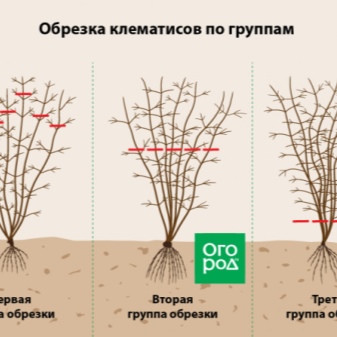
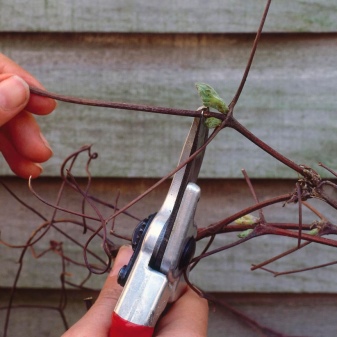
Preparing for winter
Clematis "Westerplatte" is a frost-resistant type of vine. But in order to prevent the roots and shoots from freezing in the conditions of our harsh winters, vines should be covered for the winter... This is done in late autumn, when the soil begins to freeze a little. First, summer debris, dry leaves and stems are removed from the site. Peat, mature manure, dry sawdust are placed on the root area. The shoots left for the winter after pruning should be rolled up in a ring and laid on the soil, covered with a covering material, spruce branches should be thrown, and roofing felt, roofing felt, should be put on it. It is important not to wrap up the plants unnecessarily.
At the very bottom of the shelter, a small gap must be left for air circulation in order to prevent the shoots from drying out.

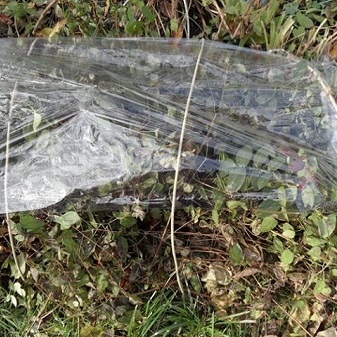
Diseases and pests
With proper cultivation techniques and proper care, Westerplatte clematis is resistant to plant diseases and pests. However, if the planting site is incorrectly chosen somewhere in the corner of the garden in a damp, unventilated place, clematis are affected by powdery mildew and fungal diseases.
For to preserve the vine, you need to transplant the bush in suitable conditions... For preventive purposes, it is necessary to spray with a solution of copper sulfate in the spring.
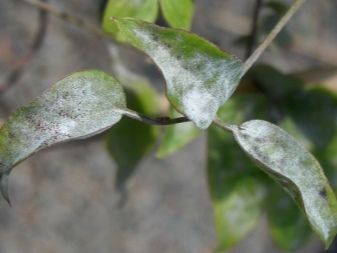
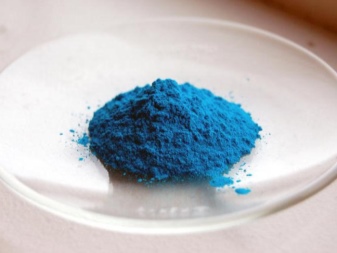
It happens that clematis begin to fade. This is a serious problem for this culture. Withering occurs in several types:
- Fusarium wilting occurs when weakened shoots are affected by a fungus in hot weather, diseased branches must be cut off immediately;
- verticillary wilting (wilt) affects vines planted in acidic soil, which is unacceptable; before planting, such soils are deoxidized with lime or dolomite flour;
- mechanical wilting occurs when planting in windy areas with drafts, plants sway strongly from the wind, delicate antennae break off, vines are damaged, clematis begins to fade.
Clematis "Westerplatte" do not have any pests characteristic of this particular culture. They are affected by common garden pests (aphids, spider mites, other leaf-eating insects), and rodents and bears can damage the roots. Plants are treated with insecticides from insects; a fine mesh can be partially protected from rodents.
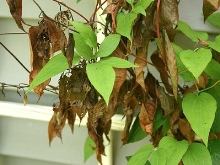
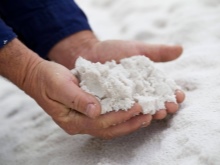
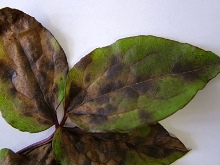
Useful Tips
In floriculture, there are many subtleties that are taken into account by experienced gardeners to obtain the best results when growing various crops. There are important points of growing and clematis.
- Clematis "Westerplatte" loves areas with good illumination, but has a peculiarity - the shoots grow well in the light, and the root system prefers shading. Experienced shading gardeners advise planting small annuals or perennials with shallow roots at the base of the plant.
- The best soil for Westerplatte clematis is fertile soil with neutral acidity.
- The plastic stems of "Westerplatte" can be directed vertically and horizontally into growth. They form delicate thin tendrils with which they cling to supports, fences, trellises. In order for the vines to hold well, the landing site must be inaccessible to strong winds.
The purchase of healthy planting material, proper farming practices and proper care will avoid major problems with the cultivation of Westerplatte clematis.
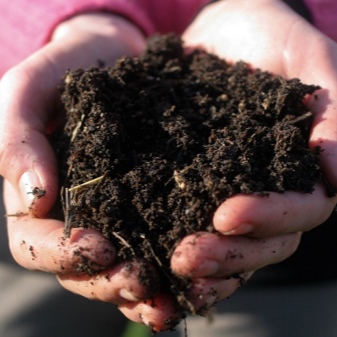
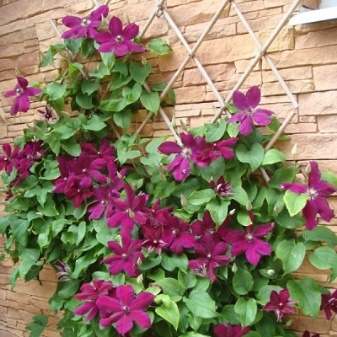
Application in landscape
In landscape compositions, clematis are used for vertical and horizontal decoration of fences, fences, gazebos, freestanding dried bushes and trees, which do not have to be removed from the site, and with the help of Westerplatte clematis can be turned into an original "highlight" of the creative idea of a florist designer ... Variety "Westerplatte" harmoniously fits into plantings with other varieties, with it you can successfully create compositions with park and climbing roses. It can be used as a container culture, while large volumetric containers are needed.
Clematis "Westerplatta" is considered an unpretentious variety, successfully grown in different climatic zones, decorates garden plots with amazingly beautiful landscape compositions.
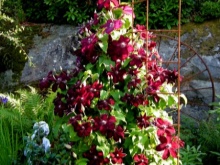

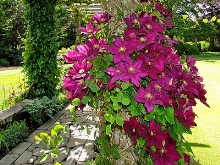
For information on how to properly grow clematis, see the next video.







































































































The comment was sent successfully.